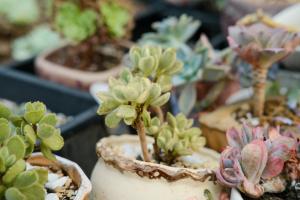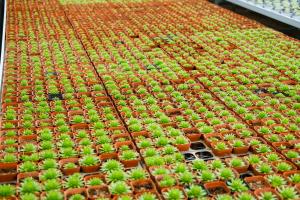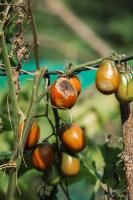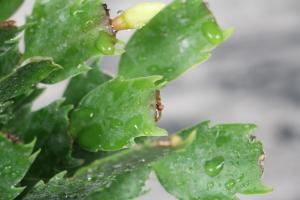Introduction
Cherry tomatoes are delicious, nutritious and incredibly popular among gardeners. However, growing them can be a challenge, especially in hot weather. In this article, we will explore just how heat tolerant cherry tomato plants are, and offer some tips for growing them successfully in hot climates.
The Ideal Temperature Range for Cherry Tomatoes
Cherry tomato plants thrive in warm temperatures, ideally between 70°F and 85°F (21°C-29°C). In these conditions, they will grow vigorously, produce abundant fruits, and remain disease-free. However, if temperatures exceed 90°F (32°C) for prolonged periods, cherry tomatoes will start to suffer.
Heat Stress Symptoms
When cherry tomato plants are exposed to high temperatures, they may exhibit a range of stress symptoms. Firstly, their growth rate may slow down, and their leaves may become yellow and wilted. Secondly, their flowers may fall off before they can form fruits, leading to reduced yield. Thirdly, their fruits may crack, deform or show signs of sunscald, reducing their quality and market value. Finally, heat-stressed plants may be more susceptible to pests and diseases, such as spider mites and blossom end rot. Therefore, it is important to monitor your cherry tomato plants closely during hot weather, and take prompt action to address any issues.
Heat Tolerance Variations Among Cherry Tomato Varieties
Although cherry tomato plants, in general, are heat-loving, some varieties are more heat-tolerant than others. For instance, heat-tolerant cherry tomato breeds, such as Sweet 100, Sun Sugar, and Super Sweet 100, can withstand temperatures up to 100°F (38°C), and still produce high-quality fruits. On the other hand, less heat-tolerant cherry tomatoes, such as Galina and Black Cherry, may stop growing entirely when exposed to temperatures above 95°F (35°C). Therefore, when selecting your cherry tomato varieties, it is important to research their heat tolerance levels, and choose those that are suitable for your climate.
Strategies for Growing Heat Tolerant Cherry Tomatoes
If you live in a hot climate and want to grow cherry tomatoes successfully, there are several strategies you may consider:
Provide shade: Cherry tomato plants that are grown in full sun for prolonged periods are at a greater risk of heat stress. Therefore, providing shade to your plants during the hottest part of the day may help to protect them. You can use shade cloth, row covers, or even potted plants to create shade.
Mulch: Mulching is an effective way to keep the soil around your cherry tomato plants moist, cool, and weed-free. Organic mulches, such as straw, hay or leaves, are especially beneficial, as they improve soil structure, fertility and water-holding capacity. Apply a 2-3 inch layer of mulch around your cherry tomato plants, but keep it away from direct contact with the stems.
Water regularly: To avoid water stress, cherry tomato plants grown in hot weather need to be watered regularly and deeply. The best time to water them is early in the morning or late in the afternoon, when the sun is not too intense. Use a soaker hose or drip irrigation system to deliver water directly to the soil, rather than wetting the leaves.
Fertilize properly: Cherry tomato plants that are grown in hot weather may benefit from regular feedings of balanced fertilizer, such as 10-10-10 or 20-20-20, to maintain their growth and productivity. However, avoid over-fertilizing, as it may lead to excessive foliage growth at the expense of fruit production.
Choose the right planting time: To avoid exposing your cherry tomato plants to the hottest part of the summer, consider planting them in spring or fall, when temperatures are milder. Also, if you live in a climate with scorching summers, you may choose to grow cherry tomatoes in containers, which can be moved to shadier areas or indoors when needed.
Conclusion
Cherry tomato plants are a great addition to any garden, but growing them in hot weather can be a challenge. By understanding their ideal temperature range, heat stress symptoms, heat tolerance variations among varieties, and strategies for growing them successfully, you can increase your chances of enjoying bountiful, juicy cherry tomatoes all summer long.

 how many times do yo...
how many times do yo... how many planted tre...
how many planted tre... how many pine trees ...
how many pine trees ... how many pecan trees...
how many pecan trees... how many plants comp...
how many plants comp... how many plants can ...
how many plants can ... how many plants and ...
how many plants and ... how many pepper plan...
how many pepper plan...






























